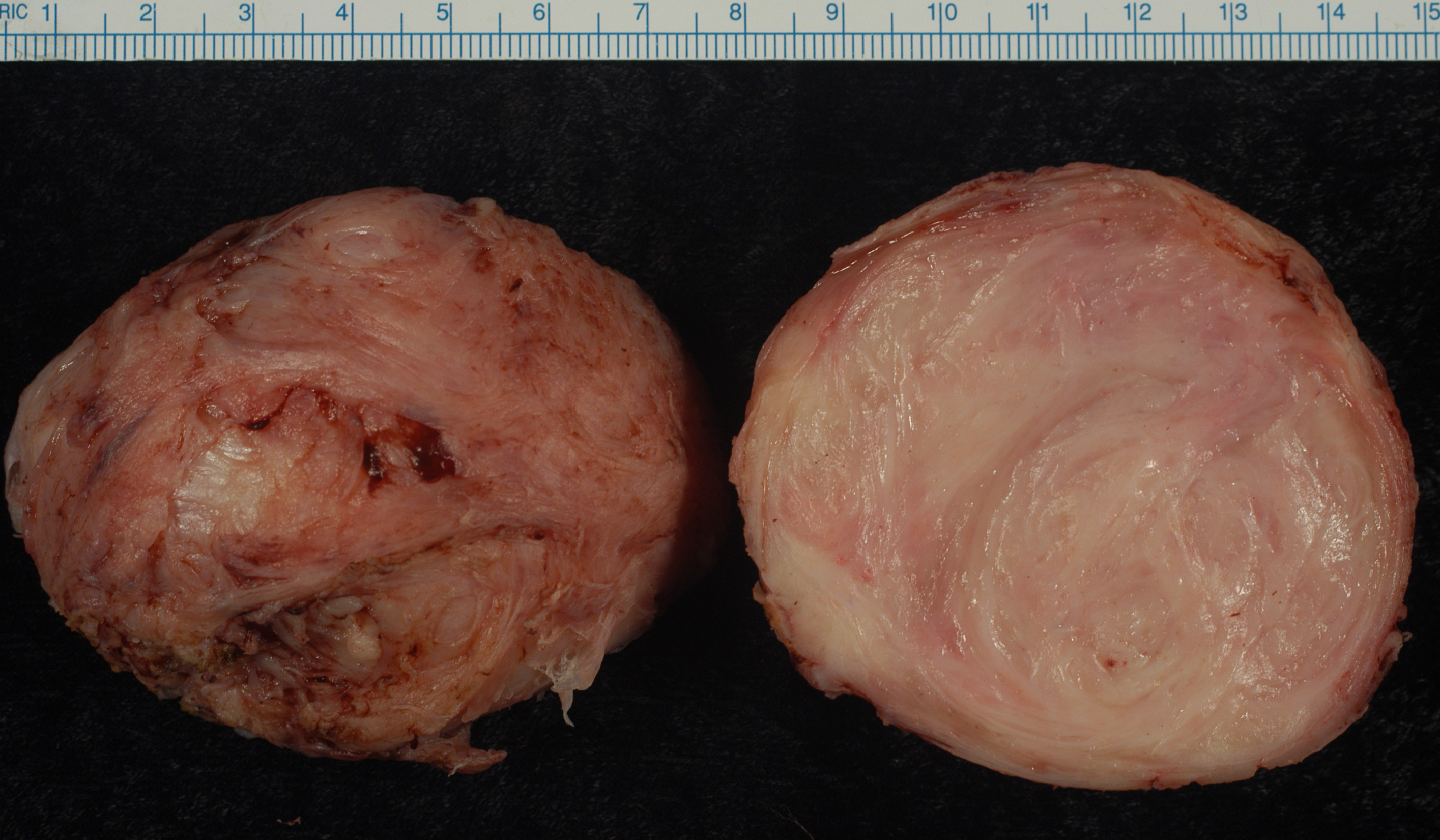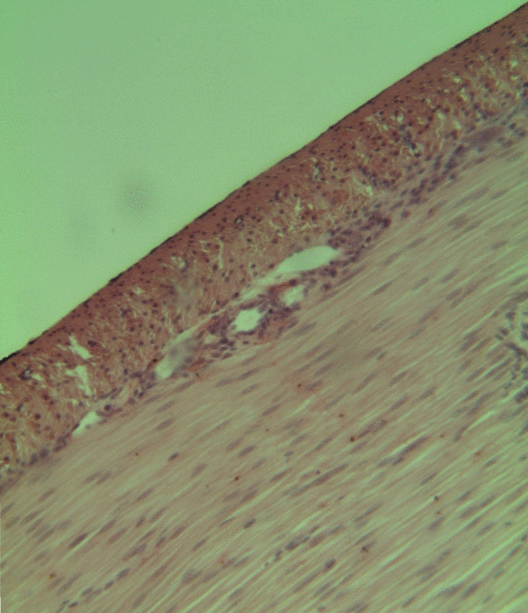|
Fibroid (other)
Fibroid may refer to: * Uterine fibroid or fibroid, a benign growth in the uterus composed of: ** Leiomyoma, a benign smooth muscle tumor that very rarely becomes cancer (0.1%) * Fibroma or fibroid, a tumor of fibrous connective tissue usually found on the skin * Inflammatory fibroid polyp, in the colon {{disambiguation ... [...More Info...] [...Related Items...] OR: [Wikipedia] [Google] [Baidu] |
Uterine Fibroid
Uterine fibroids, also known as uterine leiomyomas or fibroids, are benign smooth muscle tumors of the uterus. Most women with fibroids have no symptoms while others may have painful or heavy periods. If large enough, they may push on the bladder, causing a frequent need to urinate. They may also cause pain during penetrative sex or lower back pain. A woman can have one uterine fibroid or many. Occasionally, fibroids may make it difficult to become pregnant, although this is uncommon. The exact cause of uterine fibroids is unclear. However, fibroids run in families and appear to be partly determined by hormone levels. Risk factors include obesity and eating red meat. Diagnosis can be performed by pelvic examination or medical imaging. Treatment is typically not needed if there are no symptoms. NSAIDs, such as ibuprofen, may help with pain and bleeding while paracetamol (acetaminophen) may help with pain. Iron supplements may be needed in those with heavy periods. Medica ... [...More Info...] [...Related Items...] OR: [Wikipedia] [Google] [Baidu] |
Leiomyoma
A leiomyoma, also known as a fibroid, is a benign smooth muscle tumor that very rarely becomes cancer (0.1%). They can occur in any organ, but the most common forms occur in the uterus, small bowel, and the esophagus. Polycythemia may occur due to increased erythropoietin production as part of a paraneoplastic syndrome. The word is from '' leio-'' + '' myo-'' + ''-oma'', "smooth-muscle tumor". The plural form can be either the English leiomyomas or the classical leiomyomata. Uterus Uterine fibroids are leiomyomata of the uterine smooth muscle. As other leiomyomata, they are benign, but may lead to excessive menstrual bleeding (menorrhagia), often cause anemia and may lead to infertility. A rare form of these tumors is uterine lipoleiomyoma—benign tumors consisting of a mixture of adipocytes and smooth muscle cells. Uterine lipoleiomyomata have been observed together with ovarian and other pathologies and some of them may develop into liposarcoma. These tumors are monoc ... [...More Info...] [...Related Items...] OR: [Wikipedia] [Google] [Baidu] |
Myoma
A myoma is a type of tumor that involves muscle cells. There are two main types of myoma: * Leiomyomas which occur in smooth muscle. They most commonly occur as uterine fibroids, but may also form in other locations. * Rhabdomyomas which occur in striated muscle Striations means a series of ridges, furrows or linear marks, and is used in several ways: * Glacial striation * Striation (fatigue), in material * Striation (geology), a ''striation'' as a result of a geological fault * Striation Valley, in Anta .... They are rare tumors, occur in childhood and often become malignant. Whether or not angiomyomas are a type of leiomyoma or a separate entity is disputed as of 2014. Myomas are benign tumors of the uterus that can affect the fertility of a woman depending mainly on three factors: # Size (cut off value 4-5 cm) # Number # Location (they can be intramural, subserous or submucous). Submucous ones are worst from a fertility point of view, while subserous are less dangerous. ... [...More Info...] [...Related Items...] OR: [Wikipedia] [Google] [Baidu] |
Smooth Muscle Cells
Smooth muscle is an involuntary non- striated muscle, so-called because it has no sarcomeres and therefore no striations (''bands'' or ''stripes''). It is divided into two subgroups, single-unit and multiunit smooth muscle. Within single-unit muscle, the whole bundle or sheet of smooth muscle cells contracts as a syncytium. Smooth muscle is found in the walls of hollow organs, including the stomach, intestines, bladder and uterus; in the walls of passageways, such as blood, and lymph vessels, and in the tracts of the respiratory, urinary, and reproductive systems. In the eyes, the ciliary muscles, a type of smooth muscle, dilate and contract the iris and alter the shape of the lens. In the skin, smooth muscle cells such as those of the arrector pili cause hair to stand erect in response to cold temperature or fear. Structure Gross anatomy Smooth muscle is grouped into two types: single-unit smooth muscle, also known as visceral smooth muscle, and multiunit smooth musc ... [...More Info...] [...Related Items...] OR: [Wikipedia] [Google] [Baidu] |
Fibroma
Fibromas are benign tumors that are composed of fibrous or connective tissue. They can grow in all organs, arising from mesenchyme tissue. The term "fibroblastic" or "fibromatous" is used to describe tumors of the fibrous connective tissue. When the term ''fibroma'' is used without modifier, it is usually considered benign, with the term fibrosarcoma reserved for malignant tumors. Types Hard fibroma The hard fibroma (fibroma durum) consists of many fibres and few cells, e.g. in skin it is called dermatofibroma (fibroma simplex or nodulus cutaneous). A special form is the keloid, which derives from hyperplastic growth of scars. Soft fibroma The soft fibroma (fibroma molle) or fibroma with a shaft ( acrochordon, skin tag, fibroma pendulans) consist of many loosely connected cells and less fibroid tissue. It mostly appears at the neck, armpits or groin. The photo shows a soft fibroma of the eyelid. Other types of fibroma The fibroma cavernosum or angiofibroma, consis ... [...More Info...] [...Related Items...] OR: [Wikipedia] [Google] [Baidu] |


